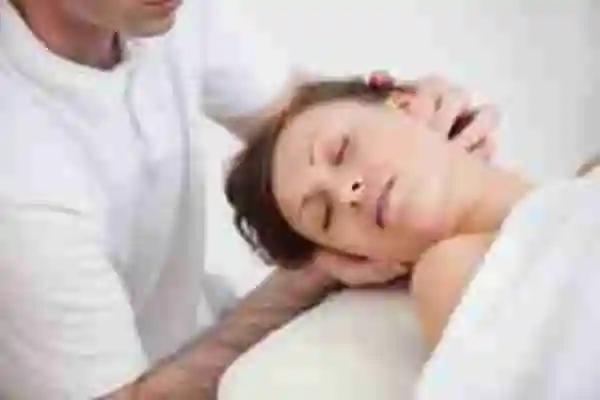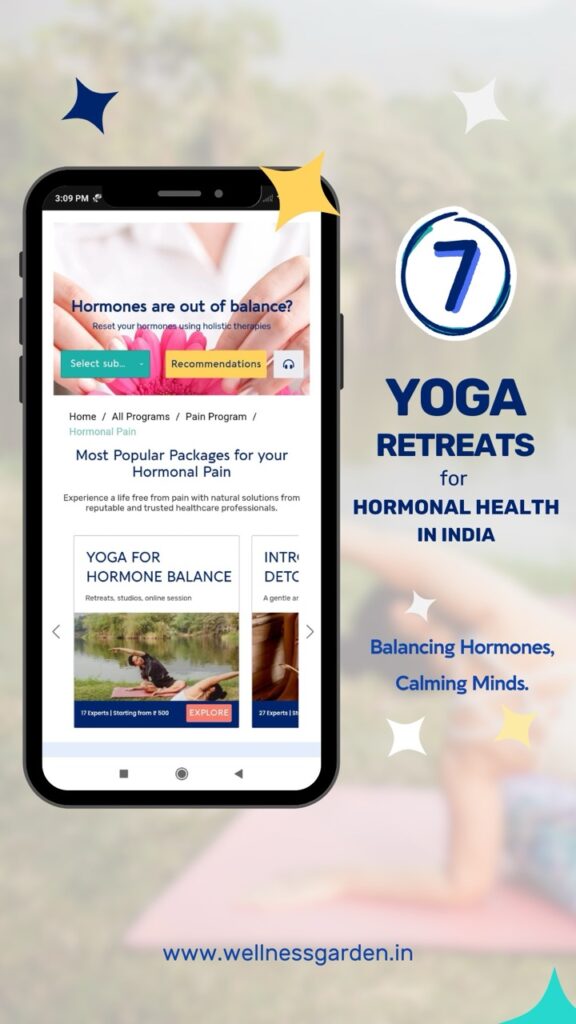Rhythm and Touch: Cranio-Sacral Therapy
- Specialties & Therapies
- 4 mins
- March 25, 2023
- WG Team
- Back pain, Craniosacral Therapy
Cranio-sacral Therapy (CST) is a gentle yet powerful hands-on healing approach that targets the skull, spine, and pelvis to induce relaxation and healing.
Grounded in the understanding of the cerebrospinal fluid’s rhythm, CST seeks to optimize the central nervous system’s function, alleviate pain and stress, and facilitate the body’s innate healing mechanisms.

Introduction of Cranio-Sacral Therapy
Cranio-sacral therapy (CST) is a gentle, non-invasive, hands-on healing modality that focuses on the manipulation of the skull, spine, and pelvis to promote healing and relaxation throughout the body.
It is based on the concept that the cerebrospinal fluid (CSF), which surrounds and protects the brain and spinal cord, has a rhythm that can be detected and manipulated. The therapy aims to improve the functioning of the central nervous system, reduce pain and stress, and enhance the body’s natural healing processes.
History of CST
An American osteopath Dr. William Garner Sutherland devised cranial osteopathy almost a century ago. Cranio-sacral therapy (CST) was developed in the 1970s by John Upledger, a doctor of osteopathy, as an offshoot of cranial osteopathy into craniosacral therapy (CST).
Dr. William G. Sutherland observed that the bones of the skull are joined together in a zig-zag pattern, like the gills of a fish. He had an astonishing, ground-breaking realization that maybe the skull bones are not completely fused as is widely believed. Possibly, there is some scope for minute movements. Even he thought the idea was ludicrous, and developed the techniques of CST while he tried to prove himself wrong!
As he refined his theories, he found out that not just the cranial bones, but every muscle, bone, and organ in the body has a particular type of movement to some sort of rhythm.
He recognized a connection between the rhythmic movement of the fluid and membranes around the brain and spinal cord, as well as a corresponding rhythmic movement of the sacrum, with health and well-being.
In health, these movements are unrestricted. When some injury or disease affects some area, the movement is compromised.
A Cranio-sacral Therapist is trained to feel this dance of the various systems of the body through “thinking, feeling fingers” – and when they perceive it to be restricted, to gently nudge them back into synchronicity. The body then reorients itself towards health.
The cranial system is a semi-closed, hydraulic system comprising the spine, the skull, its cranial sutures, diaphragms, fascia of the body, and the cerebral spinal fluid (CSF) which flows through the spinal cord. There are three approaches to craniosacral therapy that have evolved since Dr. Sutherland first began investigating the cranial system. They are called the mechanical, functional, and biodynamic models.
Conditions that can be treated using CST
CST has been used to treat a variety of conditions, both physical and psychological.
The Upledger Institute lists the following disorders as suitable for treatment with CST:
- Alzheimer’s disease
- Relieve chronic back pain
- Treats chronic fatigue
- Improved digestion
- Relieves colic
- Better sleep
- Treats depression, anxiety, and dementia
- Relief from fibromyalgia
- Increased resiliency & immune system
- Improves Learning disabilities
- Relief from and prevention of headaches & migraines
- Relieves neck pain
- Post-traumatic stress disorder (PTSD)
- Decreased teeth grinding & TMJ
- Helpful in Spinal cord injury
- Reduces stress
- Release emotional and spiritual blocks
How could it benefit health and well-being?
Some people use craniosacral therapy as an adjunct to other forms of treatment, including migraine headaches, chronic pain, chronic fatigue syndrome, post-traumatic stress disorder, trauma of any kind, post-surgical recovery, Temporomandibular joint pain, and others.
What to expect during a CST session
A typical CST session is similar to massage therapy, except the individual lies quietly, fully clothed, The treatment session begins with a consultation with your trained therapist to identify troubled areas. The therapist makes gentle contact at selected points around the head, torso, knees, and feet. This light contact consists of gentle finger pressure, with no bone manipulation or forceful thrusts such as those used in chiropractic work, bone-setting, or osteopathy.

The practitioner notes what he or she perceives at selected points on the body and in the craniosacral system (the membranes and cerebrospinal fluid that surround and protect the brain and spinal cord), as well as the client’s attitude and intentions. The light touch and fascial release may help your muscles and organs naturally relieve stress, which improves function. Many individuals often report feeling a sense of deep relaxation. The goal of craniosacral therapy is to help get rid of restrictions in this system to improve the functioning of the central nervous system.
Precautions
In general, there are no precautions that need to be taken. Anyone can take CST – including newborns, pregnant women, and the elderly.
CST can be even given pre and post-surgery with the consent of the operating surgeon – though in many cases, CST has helped prevent surgery in the first place. It’s great when your Craniosacral therapist can work with your healthcare physician and supplement your existing treatment.
How long is each CST session? And how many sessions does one typically need?
A CST session could be between 45 minutes to an hour. Each person’s experience and response to the treatment is unique. The number of sessions required could vary depending on the severity of the condition. Some people feel “cured” in just one or two sessions, others may need many more sessions over a few months or even years.
Most people will return for sessions long after they are completely alright, to relax and rejuvenate themselves, enhance their sense of well-being, and make sure they don’t fall ill.
What can I expect from Craniosacral therapy?
Craniosacral Therapy impacts the musculoskeletal, nervous, cardio-vascular, circulatory, and immune systems to relieve diseases and their root causes. Chronic issues gradually decrease pain. Migraines, back problems, arthritis, depression, anxiety, etc problems get relieved. Students have better focus and clarity. Professionals are better at their jobs.
How often is Craniosacral therapy?
The number of sessions needed can vary, ranging from once per week to two or three times a week, depending on the severity of the ailment. Some may find relief in just a few sessions, while others may choose to embrace ongoing sessions to enhance their overall health.
So, as you contemplate the role of Craniosacral Therapy in your holistic wellness journey, envision a tapestry of healing, harmony, and self-discovery. Within the gentle touch and rhythmic pulses of this therapeutic art, you might uncover a path toward your body’s innate capacity to rejuvenate, heal, and flourish. Whether you seek freedom from pain, relief from stress, or a holistic approach to wellness, CST stands as an inviting partner on your journey to holistic health.
Craniosacral therapy does not harm when practiced sensitively and respectfully by a trained practitioner.
If you’re interested in practicing the aforementioned CST Sessions under our guidance, feel free to get in touch with us for personalized CST Consultations and more.
A Word From WG
Wellness Garden is your committed partner in seeking comprehensive natural and holistic therapies to address all your pain and wellness requirements. Our approach encompasses the entirety of your body, mind, and environment, integrating body, mind, and nutrition therapy and various other techniques.
Whether you’re facing physical or mental health concerns, life hurdles, or simply aiming to enhance your overall well-being, we’re here to provide the support you need. Get in touch with us to explore the possibilities and embark on your journey towards holistic therapy and improved health.
- Table of Contents
- • Introduction
- • What to expect in session
- • A Word from WG
Recent Posts
Join Our Newsletter
End note from WG Team
Disclaimer: This information is provided for educational purposes and should not be construed as medical advice. Please consult with healthcare practitioners before undertaking any changes in wellness routines or adding new therapies.
Latest Blogs
Check out some of your blogs related to your interest.
- September 18, 2025
- Dr. Piyush Jain
- 2 Mins
- September 12, 2025
- Dr. A. Shaji Bharath
- 2 Mins
- September 10, 2025
- NIH
- 4 Mins
- August 16, 2025
- Dr. Shubhankari P. Rao
- 2 Mins





